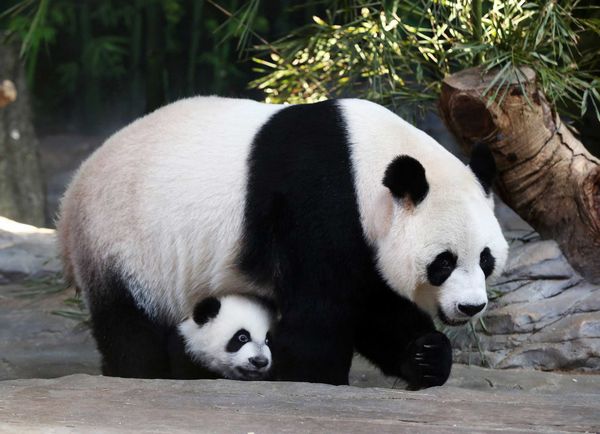It is said that the natural lifespan of giant pandas is generally about 30 years old, and 35 years old is equivalent to 105 years old for humans. In the past, it was said that the life span of 70 is rare since ancient times. Now that the living and social conditions are much better, the life expectancy of people has generally increased, but there are still very few people who can really live to be a hundred years old. From this point of view, giant pandas in their 30s are indeed very old, and it is not easy.
Wild animals are just like humans. After aging, their parts wear out, their functions degenerate, and they are weak and sick. It is also a difficult time to survive. There is a 35-year-old giant panda in Hong Kong Ocean Park. Because of high blood pressure, arthritis, cataracts and other “senile diseases”, his health condition has deteriorated. After he stopped eating completely, the hospital implemented euthanasia this year. This can’t help but make people feel a little sad. In fact, it is possible to avoid euthanasia and wait for their natural death. It also means returning to nature. Not all wild giant pandas die like this in the wild.
This reminds me that among the 673 captive-bred giant pandas in our country, the group rescued from the wild in the early 1980s and the early captive-bred ones are all very old and entering the late stages of life. The purpose of artificial domestication and breeding of giant pandas is to release them into the wild and increase the number of wild populations. But wild animals are wild animals after all. The idea is really good, but it is difficult to change from home to wild many times, so that only 11 animals have been released. Except for one that died, it is not clear whether all others have entered the wild population, whether they have contributed to the immortality of the giant panda species, etc. Moreover, the wild population of giant pandas is developing very well now, and there are double-protected habitats in the Giant Panda National Park and a large number of nature reserves.
In this way, those artificial giant pandas that have reached their twilight years are equivalent to spending their entire lives in captivity, and have not returned to wild habits and wild environments until they die. Is it also a sad thing for wild animals? Of course, they have contributed to artificial utilization, and it can be said that they die without regret. For example, it is of great significance to exhibit in the park to enhance people’s understanding of wild animals, to provide visitors with a close relationship between humans and wild animals at the Panda Base, and even to present them as national gifts to friendly countries.
However, this kind of use still has to be restricted to protect the welfare of wild animals, and the overall demand may not be very large. In view of this, it may be necessary to control the number of artificial giant pandas in order to reduce as much as possible the number that cannot be returned to the wild throughout their lives. Otherwise, too many giant pandas will happily come to the world, and they will be depressed until they are 100 years old and have no future. How embarrassing!
TAC THIEN – LINKPIZ.COM
